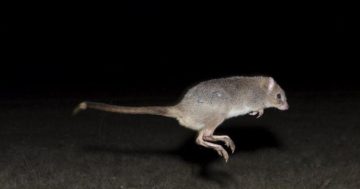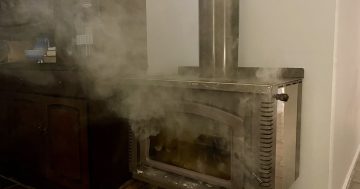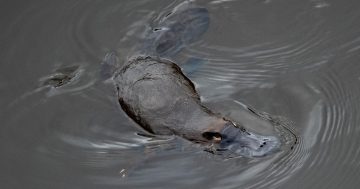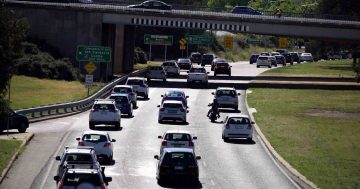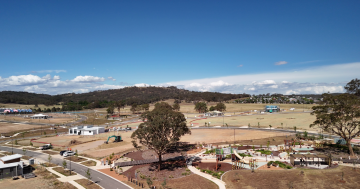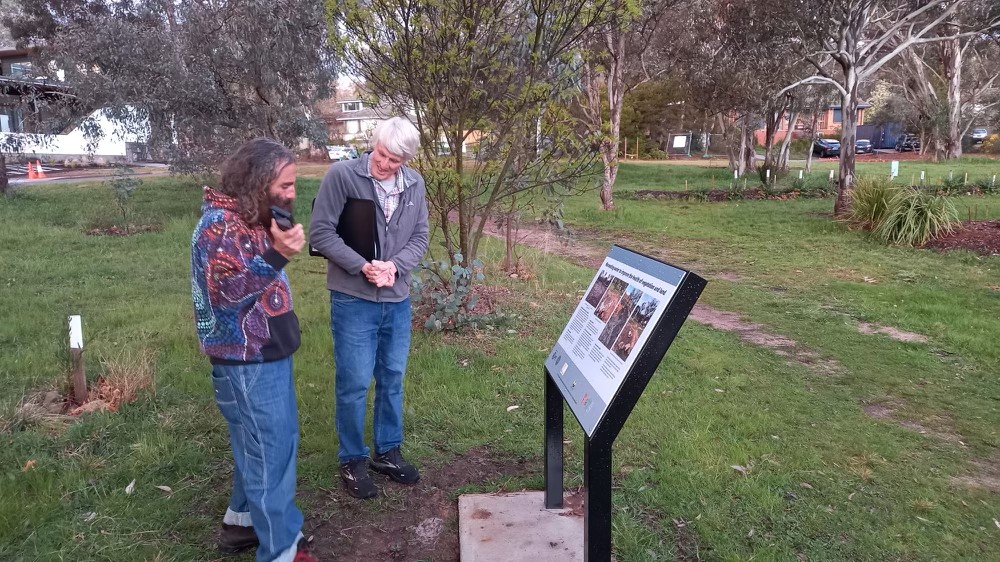
Chris Mobbs shows Gardening Australia‘s Costa Georgiadis the timeline of the park’s swale project during his recent visit to Canberra. Photo: Supplied.
When the powers that be designed the Canberra suburb of Hackett more than 50 years ago, for some reason, one area destined to become house blocks was left as a park.
No one knows why, except that the land was on a bit of a slope. Today, that piece of land in Bragg Street, about a hectare in size, is described as a “fantastic legacy” – for locals, just as it now is for one of nature’s favourites, the frog.
For Chris Mobbs, who lives adjacent to the Bragg Street park, it’s nothing short of a gift.
In its early days, after a downpour, water would collect in and block the stormwater drains, making it clear that the catchment needed to be managed. What they needed, he said, were ‘swales’, which operate like mini-dams.

Almost 40 endangered Northern Corroboree Frogs have been discovered at sites across Namadgi. Photo: Namadgi National Park.
The residents did all the leg work, contacted experts in swale building, and applied for and successfully secured an ACT Government grant for the project.
“Since then,” said Chris Mobbs, “we’ve had lots of rain and the swales have been so successful in capturing the water and stopping it running across the surface. But the most fascinating thing is that it has brought the frogs in – we have recorded five different kinds of species now. We have had new isolated frogs here in the past, but nothing like this.
“What we did was capture the water to reduce flooding and improve vegetation growth, but a side bonus has been creating this temporary habitat for frogs.”
He said the frogs were very noisy in spring last year because there was so much water sitting around.
“But come December when it drained away, they went quiet. Recently, when we had 60 mm of rain here, that put a lot of water back in the swales, and we all wondered where the frogs went. Maybe to a frog hotel where they could go and hide under rocks and soft sand,” he joked. “Then, after it rained and the water was collected, they came out and had a party. Frogs are pretty adaptable.
“We do wonder where they come from,” he said.
“Mount Majura is only about 200 metres away as the frog hops … the really interesting phenomenon is how these little animals can move when the environment is right for them.”
So is the old bush legend that if you can hear frogs croaking, it means it’s a good environment, true?
“Yes,” said Chris, “it’s a pretty good indicator of a healthy environment.”
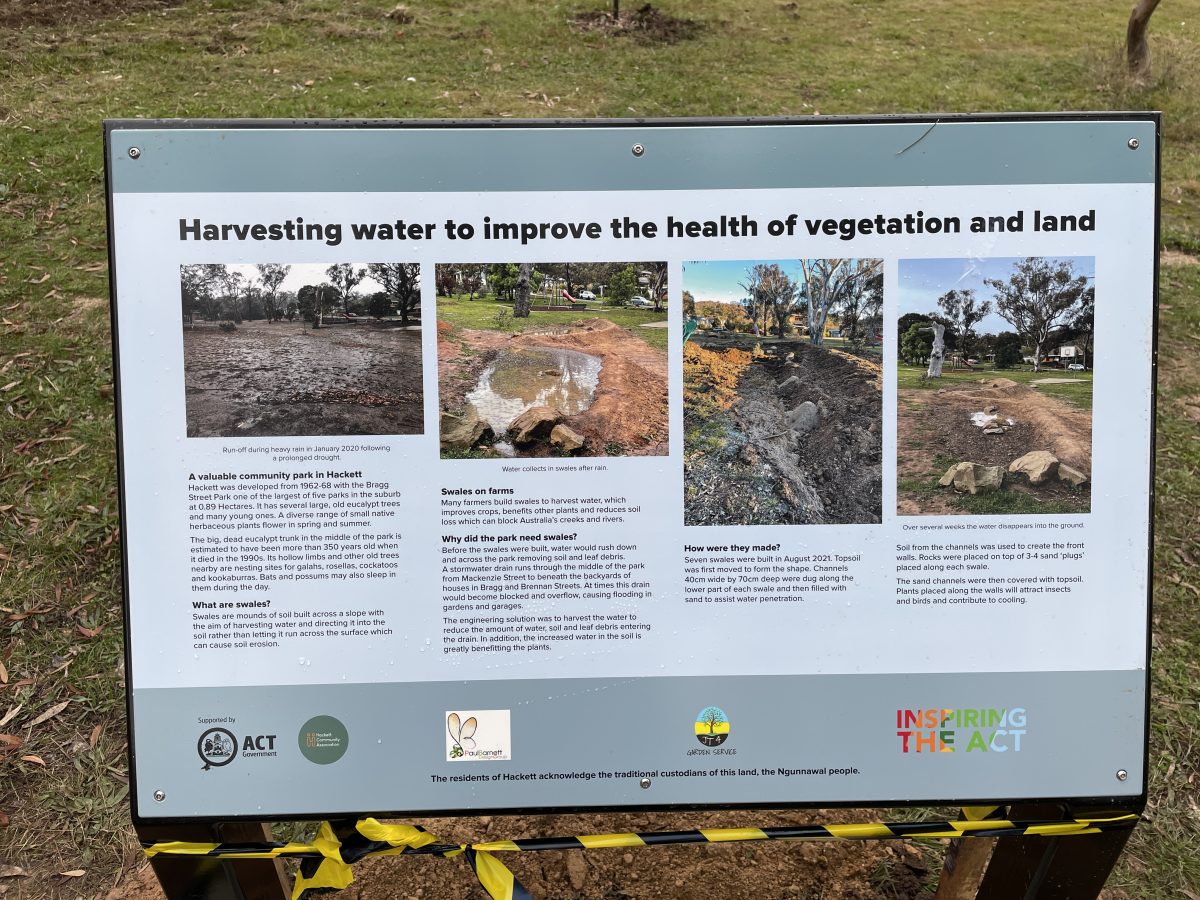
Timeline sign at the Hackett park showing how the water harvesting project works. Photo: Supplied.
Meanwhile, the ACT Minister for the Environment, Parks and Land Management, Rebecca Vassarotti, said this week that 37 endangered Northern Corroboree Frogs had been discovered at sites across Namadgi.
“Since 1986, the ACT Government has been keeping a close eye on our tiny, stripey friends, the Northern Corroboree Frogs,” Ms Vassarotti said.
“For a while now, these frogs have been listed as critically endangered, having experienced rapid decline because of fungal outbreaks and the devastating impact of climate change on their habitat.
“Having not seen these frogs in the wild since 2019, we were beginning to think all hope was lost and that the species was close to extinction. I’ve been heartbroken to have to continue to list species as close to extinction, so I’m really pleased to announce today that the ACT Government’s program to reintroduce Northern Corroboree Frogs has been a massive success.
“The identification of new Northern Corroboree Frogs across a range of sites restores my confidence that we can save this incredible frog that is so unique to our region.
“Earlier this year, our dedicated ecologists discovered 16 male Northern Corroboree Frogs calling at the Ginini Flats Wetland Complex Ramsar Site and 21 frogs in a lower elevation site in Namadgi, where frogs and eggs had been released.”
More information about the Northern Corroboree Frogs is available on the ACT Environment website.
Original Article published by Sally Hopman on Riotact.




